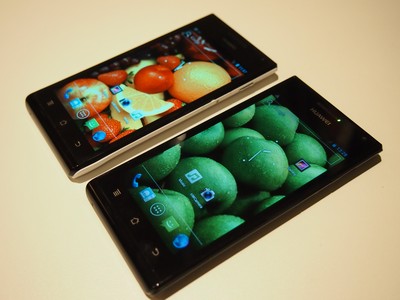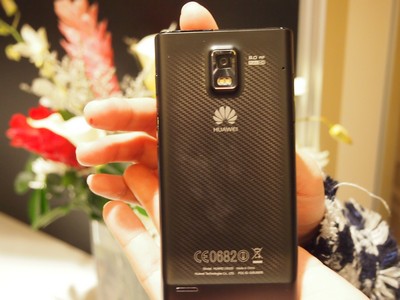Hands-on With Huawei Ascend P1 S, World's Thinnest Smartphone
LAS VEGAS - Huawei is making its mark at CES, today introducing two new super-thin, 4.3-inch Android 4.0 smartphones, the Ascend P1 and the Ascend P1 S.
At just 0.26 inches thick, Huawei claims the P1 S is the thinnest smartphone in the world (the Droid RAZR, by comparison, is 0.3 inches at its thinnest). Powered by a 1.5-Ghz dual-core TI OMAP 4460 Cortex A9 processor, the P1 S should be no slouch when it comes to performance, either. Huawei's other phone, the P1, will have the same Cortex-A9 processor, but measures a slightly thicker 5.0 x 2.5 x 0.3 inches.
Both devices sport 4.3-inch, 940 x 560-pixel Super AMOLED screens covered with Corning Gorilla Glass, and come wrapped in metal casings.
We got some hands-on time with both the P1 and P1 S and despite their thin shells, both devices felt very sturdy. Interestingly, the P1 S, while thinner than the P1, feels a bit heavier. For the P1 and P1 S's exteriors, Huawei eschewed a textured finish and instead chose to use a glossy paint job, which quickly picked up fingerprint smudges and made the phones feel a bit slippery in our hands. From a performance standpoint, however, both phones were very quick, offering no lag while scrolling through their apps menus or across multiple homescreen pages.
Both the P1S and P1 offer 4G connectivity via their HSPA+ antennas. In addition to their dual-core processors, the P1 and P1S also include SGX 540 graphics processors, as well as 1GB of RAM and 4GB of ROM. Storage space is limited to 8GB, although can be expanded via the devices' microSD card slots.
The P1 and P1 S also include 8-megapixel rear-facing and 1.3-MP front-facing cameras for video chat apps, MHL-HDMI connections, dual noise reduction microphones, and DLNA support. The handsets also come packed with ambient light sensors, as well as the ubiquitous accelerometers and gyro sensors.
Huawei has yet to establish a carrier partner or definitive price-point for its new halo phones, but company representatives say they are estimated to run roughly $400. Both phones are expected to launch around April in the U.S., Europe, Asia, the Middle East and Australia.
Sign up to receive The Snapshot, a free special dispatch from Laptop Mag, in your inbox.





